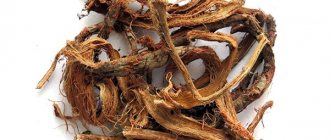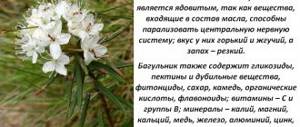Medicinal plants are plants whose organs serve as raw materials for remedies used in folk medicine. Today, there is a large list of diseases that do not allow sick people to use medications for a long time. For example, if a drug has many side effects, or individual intolerance to the components included in its composition. Often in such cases, doctors prescribe medicinal herbs. This treatment is called herbal medicine.
Soy - beneficial properties
The protein contained in soy is easily absorbed by the body and contains a balanced set of amino acids. At the same time, soy contains virtually no carbohydrates, which allows products made from it to maintain a low calorie content.
Soybean composition:
- Protein – 40%;
- Fats – 20%;
- Fructose, sucrose, glucose – 10%;
- Starch;
- Pectins;
- Polyunsaturated fatty acids;
- Isoflavonoids;
- Phospholipids;
- Lecithin;
- Choline;
- Enzymes;
- Vitamins of groups B, E, D, beta-carotene;
- Tocopherols;
- Macroelements – phosphorus, potassium, calcium, magnesium, sodium, silicon, sulfur;
- Microelements – boron, aluminum, molybdenum, iron, cobalt, manganese, iodine, nickel.
The large amount of complete protein contained in soy (about 34%, which is more than in meat and chicken), has made it a desirable element in the diet of vegetarians and bodybuilders. The large amount of vitamins puts soy among foods with antioxidant properties.
Dietary enzymes, particularly phytic acid, found in abundance in soybeans, help break down and absorb protein. Lecithin and choline from soybeans speed up metabolism, help reduce “bad” cholesterol, and restore cells of the nervous system and brain. Such valuable properties give nutritionists reason to include soy products in the menu of patients who are overweight or have abnormal metabolism.
So, among its medicinal properties :
- lowering cholesterol levels;
- reduction of symptoms of menopause and menopause;
- stimulation of the brain and central nervous system;
- prevention of heart disease;
- reduction of symptoms of radiation sickness;
- preventing the development of tumors and cancer cells;
- normalization of glucose levels and prevention of complications in diabetes mellitus;
- reducing the secretion of gastric juice and treating gastric hypersecretion, ulcers and gastritis;
- treatment of chronic and acute infectious diseases;
- reducing the possibility of Parkinson's disease;
- strengthening immunity.
Soy helps remove radionuclides and heavy metal salts from the body. Therefore, it is actively included in the diet in regions with unfavorable environmental conditions or with increased radioactive background. This is a desirable product on the menu of patients suffering from diabetes, since soy affects the production of insulin by the pancreas and improves its functioning.
Medicinal properties of muraya flower
- The beneficial properties of indoor muraya help reduce headaches or toothaches, which go away after chewing the leaves of the plant.
- The flavonoid hesperidin contained in the leaves helps strengthen blood vessels and improve capillary permeability.
- Fresh leaves are chewed for stomatitis, gum inflammation and small wounds in the oral cavity.
- Decoctions and infusions of muraya are used to treat the thyroid gland, diabetes and throat diseases.
- The fragrant floral aroma has a beneficial effect on patients with angina attacks.
- The aromatic oils released by the bush during flowering have a relaxing and calming effect. People suffering from insomnia are advised to place a flowering plant in the bedroom.
- Alcohol tinctures of muraya berries are used for hypertension, coronary artery disease and to prevent heart attacks.
- Diabetics are advised to eat fresh berries to reduce sugar levels and improve metabolism.
- Infusions from the leaves are a powerful antiseptic that is used to heal ulcers, purulent wounds and skin abrasions.
- Decoctions of flowers are successfully used in cosmetology. They help improve complexion and moisturize aging, dull skin.
Soy - use in folk medicine
The benefits of the plant have been proven by a large number of traditional medicine recipes in which it is used. It’s not for nothing that folk healers tried and preserved so many ways of using it so that others could benefit from it .
- Sprouted soybeans benefit the body by strengthening the immune system, thereby protecting it from harm. To do this, pour a handful of seeds into warm water and drain after 12 hours. Then they are laid out on a damp cloth and placed on a sunny windowsill, not forgetting to spray until the sprouts appear. These seeds are crushed and eaten a tablespoon a day, or blanched and added to salads.
- To remove radioactive substances and toxins from the body, you should eat at least a tablespoon of boiled soybeans every day.
- For anemia, you should take a glass of seed decoction per day, dividing it into several doses. To do this, pour a teaspoon of the plant with a glass of boiling water, leave for half an hour and filter.
- Soy products can also be beneficial and neutralize the harm we cause to the body. So, for gastritis with high acidity and ulcers, drink a tablespoon of soy milk three times a day. You can buy it or prepare it at home. To do this, soy flour is poured in equal amounts with water and left for a couple of hours. Afterwards the mixture is heated, a little salt is added and filtered. After the course of treatment, it is recommended to stop taking the medication or replace it with licorice, which has similar properties.
- To remove the symptoms of menopause, you can drink the same milk 2 large spoons three times a day.
- Soybean oil is taken one or two tablespoons per day to lower cholesterol. It can be alternated with decoctions or sumac extract to achieve results faster.
- Soy sauce is added to food to improve blood circulation. And if you need to cure thrombophlebitis, it is best to use lilac-based products.
- For delicate, smooth skin of the hands and face, it is recommended to add soybean oil to masks and make applications with it.
Contraindications for use
Preparations based on the plant are not prescribed to children, during pregnancy and breastfeeding.
Other contraindications are:
- chronic constipation;
- arterial hypertension;
- increased blood clotting.
Experts do not recommend using Saussurea salicifolia for fever, blood diseases, bleeding and other pathologies. Saussurea lappa is considered safe, but may cause side effects (dizziness, nausea, allergies, etc.). Saussurea amara should be taken with caution by people with a predisposition to thrombosis.
Some types of Saussurea may interact with other medications or supplements; consult a physician before use.
Benefits of soy isoflavones for women
Isoflavonoids are substances of plant origin, the action of which is similar to the action of the female sex hormones estrogen. They act selectively - when there is a lack of estrogen, they replace it, and when there is excess production, they gently reduce hormonal activity. Soy isoflavonoids are a completely natural product, so this hormonal regulation does not cause side effects.
Benefits of soy for women:
- When consuming soy, the risk of developing hormone-dependent malignant tumors of the mammary glands is reduced, as the excessive production of estrogen is reduced;
- Negative symptoms of menopause that occur due to a lack of estrogen are reduced - hot flashes, osteoporosis, increased risk of developing cardiovascular diseases.
- Lecithin contained in soy prevents fat from being deposited in the liver, fat cells are burned, and excess weight is lost.
Women during menopause can afford to consume soy daily in the amount of 150-200 g per day.
Sprouted soybean
Soybean sprouts, like sprouts of other grains and legumes, are extremely beneficial for health. They contain a large amount of valuable protein, the entire range of vitamins known to man, enzymes and biologically active substances. As a result of germination, the concentration of these valuable compounds increases several times compared to beans that have not been germinated.
The calorie content of this product is minimal. When consuming sprouted soybeans, a complete cleansing of the intestines occurs, since the swollen beans and coarse fibers of the sprouts, passing through the digestive tract, absorb toxins and carcinogens. Sprouted soybeans have 30% more fiber than sprouted wheat.
Canned soybeans are not as healthy as homemade soybeans. To do this, it is soaked for 6 hours, then washed and covered with damp gauze, preventing it from drying out. To do this, there should always be a small amount of water under the beans. The water is changed 1-2 times a day, washing the soybeans. Sprouts appear on day 2, and after 3-4 days it can be eaten.
To avoid poisoning from too much raw sprouts, blanch them for a minute in boiling water. This processing preserves all the beneficial properties of the sprouts, allows you to add soy to salads, and use it as a food additive.
How to collect and store a plant
- Harvesting is carried out in late autumn or winter, when the balls of grass are clearly visible against the background of trees without foliage.
- In order to lower and tighten the branches, long hooks are used.
- Branches are prepared with a thickness no thicker than a pencil.
- The plant is removed from the branches entirely and dried in a warm place. Store in places inaccessible to children.
- Raw materials are a “delicacy” for midges and moths, which quickly render them unusable. To protect the grass from pests, it is recommended to add a couple of drops of lavender oil to the lid of the storage container.
Share in the comments what medicinal properties of mistletoe you know about. Perhaps you are familiar with the beautiful Christmas rituals associated with it?
Soybean oil. Benefits and harms
Soybean oil is an extremely healthy product containing a large amount of vitamins, minerals and biologically active substances. It has been used in the countries of Indochina for about 6 thousand years, and in Europe it became known only in the 20th century. Soybean oil is produced by pressing and extracting soybeans. It is refined and deodorized, giving it consumer qualities.
Soybean oil has a straw-yellow color and a light, pleasant aroma. It is used to produce lecithin - a component of food, soap, medicines, dyes; it is fried in soybean oil, added to salads, and baked goods. The calorie content of 100 g of this product is 889 kcal. It is considered a champion in terms of tocopherol and microelements content compared to olive and sunflower oil.
Beneficial properties of soybean oil:
- Vitamins and microelements help prevent cancer and cardiovascular diseases;
- Choline, organic acids improve the functioning of the liver and heart muscle, regulate cholesterol levels in the blood;
- When consuming oil, diseases of the digestive tract are prevented and metabolism is regulated;
- The number of immune disorders is reduced.
To demonstrate the beneficial properties of soybean oil, it is enough to consume it 1-2 tbsp. l. per day. In addition to internal use, soybean oil is widely used in cosmetology to nourish the skin of the hands and face and slow down its aging. The oil can smooth out wrinkles, moisturize chapped and rough skin, and slow down the aging process.
You should not use soybean oil if you are allergic to soy protein, during pregnancy, if you are at risk of migraine attacks, or if you have kidney or liver failure.
Treatment of alcoholism with savory decoction
For alcoholism, alternative medicine also recommends the use of savory - the plant contains elements that cause aversion to alcoholic beverages.
The product simultaneously improves the functioning of internal organs, triggers the regeneration of tissues damaged by alcohol, and activates metabolic and digestive processes. Step-by-step folk recipe:
- Grind dry grass (20 grams) into fine crumbs.
- Pour boiling water (250 ml) over the plant mass and leave for a quarter of an hour.
- Place the container in a water bath and simmer for 5 minutes.
- Remove, leave to cool, strain.
Take the prepared decoction in small portions (15-20 ml) every 2 hours. The entire remedy should be drunk throughout the day, and the next morning, steam fresh homemade medicine.
An aversion to alcoholic beverages occurs after the first days of treatment, but traditional medicine recommends not stopping the course.
Taking the decoction for several weeks will strengthen the results. To prevent the recurrence of cravings for alcohol, it is recommended to drink a short course (1-2 weeks) annually for prevention.
The benefits and harms of soy lecithin
Soy lecithin contained in this product plays one of the main roles in the body. This substance is involved in the restoration of nerve tissue and brain cells. In addition, lecithin is responsible for thinking, learning, motor activity and memory. It perfectly regulates blood cholesterol levels and fat metabolism, allowing you to maintain functions at the unique level of a young body, that is, it helps fight not only diseases, but also aging.
Soy lecithin in industry is a product that belongs to the group of emulsifiers used for mixing substances with different physical and chemical properties (density, consistency, etc.). Soy lecithin is a food additive known in Russia under the code E322.
Industrial soy lecithin is found in bread, margarine and spreads, chocolate, sausages, semi-finished products (cutlets, filled pancakes), fast food products, dairy products and baby food.
Composition of natural soy lecithin:
- Kholin,
- Phosphodiethylcholine,
- Inositol,
- Phosphates,
- Linolenic acid,
- B vitamins.
Soy lecithin can be found in the form of a dietary supplement (biologically active food supplement), which is used for lipid metabolism disorders, heart and vascular diseases, memory disorders, pregnancy and liver diseases. If this additive is included in the composition of a cosmetic product, it combines elements of a cream or emulsion of different consistency, and also nourishes, moisturizes and smoothes the skin of the face and body.
Benefits of natural soy lecithin:
- Stimulates metabolism - destroys fats, relieves stress on liver cells, prevents obesity;
- Strengthens the heart muscle and cleanses blood vessels from cholesterol plaques - phospholipids in soy lecithin are involved in the formation of valuable amino acids that strengthen the myocardium;
- Helps the functioning of brain cells, the preservation and development of memory - during the development and growth of the child, it replenishes the composition of the brain matter, which normally consists of one third of lecithin;
- Stimulates bile secretion - by dissolving fats, lecithin makes bile liquid, preventing the formation of deposits on the walls of the bile ducts and bladder;
- Protects nerve fibers from stress by forming their myelin sheath;
- Reduces the craving for smoking - the neurotransmitter acetylcholine in soy lecithin helps brain receptors wean themselves from nicotine addiction.
Harm.
Natural soy lecithin is practically harmless; the only possible harm is individual intolerance to the product. Lecithin, produced from modified soybeans (for industry), stimulates obesity, depression and memory impairment, and disruption of the endocrine system.
Treatment of allergies with herbs
With age, due to a slowdown in metabolism, toxic substances accumulate in the body's tissues. And often, if you ingest some product with food, the body can respond with an outbreak of allergies, even if there was no allergy to this product before. And with age, the body can produce a response and all because of slagging, because the body is already polluted.
To prevent allergies, herbalists advise taking medicinal herbs that enhance metabolism in the body. There are not many such plants. These are dandelion, nettle, birch leaf, all plants that have a diuretic effect.
Nettle increases blood clotting, so it can only be taken in short courses. The plant cleanses the blood well, it calms the nerves, has antipruritic and antiallergic effects. For itching, it is useful to take antiallergic herbs either orally, in the form of medicinal tea, or make lotions. This herbal medicine will soothe itchy skin.
What are the benefits of soy sauce?
Fans of Asian cuisine have long been familiar with soy sauce, which is used to prepare a huge number of dishes. Preparing natural soy sauce takes about a year. It is made from evaporated soybeans and roasted wheat grains, which then undergo an enzymatic fermentation process in special containers. After a year, the sauce is filtered and bottled.
Benefits of soy sauce:
- Improved blood circulation;
- Fight free radicals with antioxidants;
- Prevention of cardiovascular diseases;
- Increased content of amino acids;
- Minimum calorie content, no cholesterol.
Unfortunately, the desire to make a profit leads soy sauce manufacturers to adulterate their product. To speed up the fermentation process, pathogenic bacterial cultures are added to the sauce, which allows you to get something like a sauce in a month instead of a year. An even more harmful method is boiling soybeans in hydrochloric acid and quenching this solution with alkali or diluting soy concentrate with plain water.
Using adulterated sauce is dangerous due to the carcinogens it contains. Both regular sauce and sauce prepared using cheaper technology contain an excessive amount of salt, which leads to salt deposits.
Soy is harmful
The negative qualities of soy products make us selective about its excessive consumption.
Negative properties of soy products:
- Soy has a goitrogenic effect, that is, substances contained in products made from it disrupt the functioning of the thyroid gland and other glands of the endocrine system and can cause thyroiditis and the formation of goiter.
- Excessive consumption of soy products causes hypertrophy of the pancreas, which leads to disruption of its functioning;
- Soy phytoestrogens disrupt the reproductive functions of the female body - disruption of the menstrual cycle in women, acceleration of development in girls, creating a threat of miscarriage in pregnant women, disruption of fetal development. In men, a large amount of soy estrogens leads to the appearance of secondary sexual characteristics and female-type obesity - decreased male sexual function, enlarged mammary glands, and delayed sexual development in boys. Therefore, it is not recommended to include soy products in children's diets.
- In older people, soy estrogens accelerate the development of Alzheimer's disease.
- Soy enzymes slow down the absorption of iodine, zinc, calcium and iron from food, so you should carefully balance your diet to replenish missing microelements;
- Oxalic acid in soy provokes the development of urolithiasis.
Taking into account all the advantages and disadvantages of soy, we can draw several conclusions:
- Soy should be consumed in moderation;
- It should be excluded from the diet of children, young women, men, and should not be used during pregnancy;
- For those who suffer from diabetes or obesity, soy is considered a dietary food if consumed in moderation.
Healthy people can consume soy 2-3 times a week, 150-200 g per day. Then soybeans will be beneficial and will become a source of essential protein.
Fat burning drink based on savory
Savory decoction is the most effective remedy for obesity and excess kilograms. Homemade medicine easily burns fatty tissue, prevents the accumulation of new formations, activates the digestive organs, and normalizes metabolic processes. Step by step recipe:
- Mix anise seeds (5 g), savory herb (15 g), rosemary (10 g).
- Steam the plant mass with hot water.
- Place in a water bath, wait until it boils, simmer for 5 minutes.
- Cool, tightly closing the container, wrap in a towel to increase concentration.
Immediately after straining, drink the drink in one go. Use a fat burning product twice a day. Do not drink the composition just before going to bed - the active components have a pronounced diuretic effect.
Lose weight in courses - a week of taking a fat-burning drink, 5 days off. It is not recommended to use the composition for more than five courses; if necessary, take a break and allow the body to rest for 1-2 months.












